
Original Link: https://www.anandtech.com/show/1275
Weekly Buyer's Guide: Mid-Range System - March 2004
by Evan Lieb on March 24, 2004 2:27 PM EST- Posted in
- Guides
Today we release our sixth Buyer's Guide in the past 6 weeks. You can look forward to Buyer's Guides in the middle of every week, and then, after the end of each month, we will retool our guides to reflect the new hardware and pricing of that particular time period. Today, we are continuing the refresh of our Buyer's Guides to see what has changed, if anything, in the past 4 weeks. In case you haven't read our new Buyer's Guides yet, here's the basic format to be released on a weekly basis:
Week 1: Entry Level System
Week 2: Mid-Range System
Week 3: High End System
Week 4: Overclocking System
For every component that goes into a computer, we offer our recommendation for a piece of hardware as well as our alternative on that type of hardware. We've added alternative hardware picks to our guides because it allows AnandTech to recommend a wider variety of hardware (especially for those willing to spend a little more than what we budget for a particular system). Alternative picks tell you just that - your alternatives, which in some cases will be better suited for your needs, and in other cases, will not be. But at the same time, we can still be assertive enough with a first place recommendation so that new buyers aren't indecisive or confused about what to purchase. Most of the prices listed for the hardware that we recommend can be found in our very own RealTime Pricing Engine. Any prices not found in our engine can be found on pricewatch.com. We list pertinent parts of our RealTime pricing engine at the bottom of every page of our Buyer's Guides so that you can choose the lowest prices from a large variety of vendors all by yourself.
We are always taking suggestions on how to improve our Buyer's Guides. If you feel we are not including a wide enough variety of systems in our guides, please let us know and we can see if it warrants an additional weekly Buyer's Guide.
Mid-Range Systems
While entry level (budget) systems should mainly be constructed with reliability and price in mind, with performance a fairly distant third consideration, mid-range systems have a slightly different order of priority. Reliability is still #1 priority, but performance and price are in a sort of tie when building that mid-range system. Performance isn't of the utmost importance in this type of system, but it's also not ignored nearly as much as a plain old entry level system is. Similarly, price isn't of utmost importance either, but buyers building a mid-range must be mindful of the price of components nonetheless. Performance and price don't lag too far behind reliability for mid-range systems, in other words.Read on to find out more...
CPU and Motherboard Recommendations
CPU: AMD Athlon XP 2800+ 333MHz FSB (512K L2 cache) BartonMotherboard: ABIT AN7 (nForce2 Ultra 400)
Price: CPU - $120 shipped (retail heatsink and fan). Motherboard - $102 shipped

AMD's Athlon XP 2800+ gets the nod this week for its, you guessed it, incredible bang for the buck. An Athlon XP 2800+ Barton running at 333MHz FSB goes for just $120 shipped online, and that includes an AMD approved HSF (heatsink and fan). $120 for the performance you get with a 2800+ Barton is an extremely attractive deal, no if's, and's, or but's about it. While AMD is pushing hard for their Athlon 64 processors, the lowest priced Athlon 64 still hovers well over $200 shipped retail online. And while the performance is considerably better with an Athlon 64, for mid-range systems, the extra cost probably isn't worth it. Then again, it all depends on your needs. An Athlon 64 3000+ (512K L2 cache) goes for $222 shipped retail online, and while costing about $100 more than the 2800+, it offers much better gaming performance, among other applications.
March 24th UPDATE: AMD Athlon 64 2800+ processors are currently available for $173 at Newegg.com and $190 at GameVE.com.

ABIT has done a great job with their nForce2 Ultra 400 series of motherboards, even if their relationship with NVIDIA can be somewhat tenuous at times. The AN7 comes with great features like SATA RAID, rear SPDIF, and room for 3 IEEE1394 FireWire ports. In addition, you get the benefit of the best performance possible from any Athlon XP chipset available in the NVIDIA nForce2 Ultra 400. Overall, there are very few things this board lacks. However, one thing it does lack is IDE RAID, which the Gigabyte 7N400 Pro2 offers, in addition to everything else the ABIT AN7 offers. However, we should note that the 7N400 Pro2 doesn't come with the MCP-T South Bridge, which offers superior sound quality if you're using speakers with a receiver and optical out. This is why we ended up choosing the AN7, as users get the MCP-T South Bridge, which in all likelihood is going to be much more useful for everyday tasks than the IDE RAID on the 7N400 Pro2. Both these motherboards cost just about the same amount, so the choice is yours if you'd rather have better sound or IDE RAID.
You may also want to take note that the ABIT NF7-S Rev.2 that we've talked about here extensively is virtually the same motherboard as the AN7. The primary difference is the Guru overclocking technology onboard the AN7 and a different BIOS to support that technology. Essentially, the AN7 and NF7-S Rev.2 are one in the same motherboard.
Listed below is part of our RealTime pricing engine, which lists the lowest prices available on the AMD CPUs and motherboards from many different reputable vendors:
If you cannot find the lowest prices on the products that we've recommended on this page, it's because we don't list some of them in our RealTime pricing engine. Until we do, we suggest that you do an independent search online at the various vendors' web sites. Just pick and choose where you want to buy your products by looking for a vendor located under the "Vendor" heading.
CPU and Motherboard Alternatives
CPU: Intel Pentium 4 2.8C 800MHz FSB (512K L2 cache) NorthwoodMotherboard: ASUS P4P800 Deluxe (865PE chipset)
Price: CPU - $178 shipped (retail heatsink and fan). Motherboard - $121 shipped

Ever since the introduction of 800MHz FSB and HT (Hyper Threading) processors, Intel has been trouncing AMD with their mid-range and high end CPU offerings in terms of performance. While you might initially think the Athlon XP 2800+ (512K L2 cache) is just as fast as a Pentium 4 2.8C (512K L2 cache), the fact is that they're not the performance equivalents of each other. While the 2.8C isn't quite as fast as AMD's Athlon 64 offerings in most applications, they are certainly faster than AMD's Athlon XP offerings. In games, content creation, and encoding, there's about a 20%-30% or so performance gain in going from an Athlon XP 2800+ (512K L2 cache) to a Pentium 4 2.8C (512K L2 cache) processor. Most of that performance is quite noticeable too, though at the same time, some of it will not be noticeable at all in the real world. In office programs, you're not going to notice much difference between the 2.8C and 2800+, if any difference at all.
Anyway, after some debate, we finally concluded that while the 2.8C offers tremendous performance, the $58 premium for a 2.8C over a 2800+ was a just bit too hefty for our liking. However, if the extra performance that a 2.8C provides over a 2800+ in the programs mentioned above is worth the $58 extra price tag to you, then by all means, purchase a 2.8C. If not, save yourself $58 and use it to upgrade a more important part of your system.
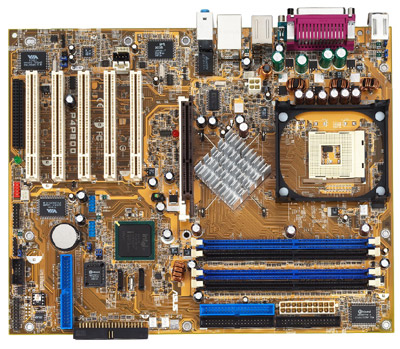
This pick was a tough one, as ABIT, Gigabyte, DFI, MSI and other motherboard manufacturers offer excellent mid-range 865PE offerings. In the end, ASUS had just enough features and performance with their P4P800 Deluxe to edge out the other contenders, not to mention the fact that we've personally tested and approved this motherboard for reliability. The P4P800 Deluxe is one of the best currently available Intel motherboards that you can pair with an 800MHz FSB processor, and therefore a 2.8C processor is perfect. The P4P800-D has an excellent balance of great features (SATA and IDE RAID, Gigabit LAN, IEEE1394 FireWire, etc.), 865PE performance, and a very good "mid-range" price at $121 shipped. Most online vendors sell this board for more like $125-$130, but as you can see, you will be able to find it for less at a few reputable online vendors. If you were so inclined to, the P4P800 Deluxe is also an excellent motherboard for FSB overclocking if you want to enter into more experienced user territory. Otherwise, we suggest you stick to stock, and not overclocked speeds, if you are a beginning builder.
For a more in-depth look at the ASUS P4P800 Deluxe, we suggest you take a look at our Intel motherboard roundup from last year.
Listed below is part of our RealTime pricing engine, which lists the lowest prices available on the Intel CPUs and motherboards from many different reputable vendors:
If you cannot find the lowest prices on the products that we've recommended on this page, it's because we don't list some of them in our RealTime pricing engine. Until we do, we suggest that you do an independent search online at the various vendors' web sites. Just pick and choose where you want to buy your products by looking for a vendor located under the "Vendor" heading.
Memory
Recommendation: 2 X 256MB Mushkin Basic Green PC3200 (CAS2.5)Price: $90 shipped ($45 per module)

Mushkin, like Corsair, also makes well performing, low cost, and reliable PC3200 memory. Mushkin calls these PC3200 modules their "Basic Green" series, whereas their higher end modules may have names such as "Level One" or "Level II". Overall, the performance difference between "high end" PC3200 and "low end" PC3200 (mostly determined by their CL rating, among other memory latency timings) is very small, and certainly not noticeable enough to warrant the extra cost of higher end PC3200 modules, or even PC3500 and PC3700 modules (for overclockers).
Alternative: 2 X 256MB Mushkin PC3500 Level One Dual Pack (CAS2)
Price: $138 shipped (shipped together in same package)

We've recommended Mushkin's Level One memory in other Buyer's Guides due to its great performance, overclockability, and price, and that is exactly why we are recommending it in this Buyer's Guide today. However, we are recommending the 256MB versions instead of the 512MB versions that we had recommended before because this Buyer's Guide concentrates on mid-range systems where 1GB of memory (2 X 512MB) is usually overkill and where users are still fairly sensitive to price. In comparison to the recommended Basic Green modules above, a $48 price premium doesn't get you a whole lot more; basically, these modules give you an extra 33MHz (433MHz versus 400MHz) in speed and a lower latency (CAS 2-3-3 instead of CAS 2.5-4-4). You will experience a boost in speed, without any doubt, but how much depends on what programs you use. If you game a lot, the extra clock frequency and lower latencies of the Level One modules will definitely be useful. If not, you will probably not notice any difference in performance whatsoever.
Video
Recommendation: 128MB PowerColor Radeon 9600 Pro, DVI, TV-outPrice: $129 shipped
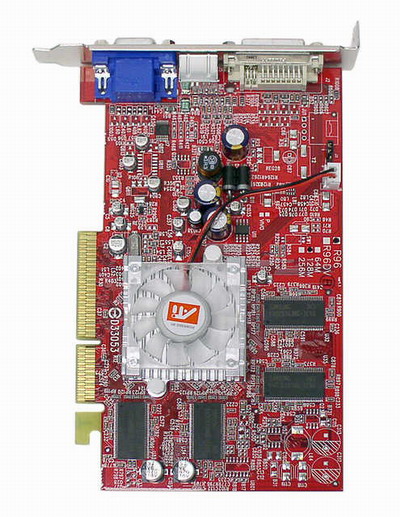
Ever since the release of the ATI R300 cores and their later iterations, ATI has either led or has had a clear lead over NVIDIA in terms of performance and price. The same is still true of ATI at the moment, a whole 18 months since the release and availability of R300 core video cards. That's why, today, we highly recommend purchasing a 9600 Pro for your mid-range system, as it offers great DX8 and good DX9 performance for the price. To put it simply, the 9600 Pro is the best bang-for-the-buck video card on the market. PowerColor makes a nice 9600 Pro for just $129 or so shipped; the additions of DVI and TV-out for this price are unique, and overall a great deal. 2D IQ quality is excellent, up to 1600x1200 desktop resolutions with the right monitor, essentially on par with retail ATI versions of the 9600 Pro. As previously mentioned, 3D performance is excellent in DX8 games and good in DX9 games, and 128MB of memory will be plenty until more intense DX9 games are released later this year and next year.
Of course, if you're not a gamer or don't plan on playing games more than once a year, or ever, a 9600 Pro would be a pointless purchase. We would instead suggest the ATI Radeon 9200SE that we recommended last week, which goes for about $40 shipped online currently. The 9200SE provides the excellent 2D quality non-gamers need, along with reliable drivers, great online ATI customer support, and up to DX8.1 support for future Microsoft operating systems. You could always opt for the cheapest of cheap ATI cards in the Radeon 7000, but you won't be getting DX8 support, which should be the bare minimum for computer systems that plan to be used beyond the next 18-24 months, when the next operating systems release will necessitate DX8 of some form for smooth operation.
Alternative: 128MB PowerColor Radeon 9700 Pro, DVI, TV-out
Price: $183 shipped

Another video card that we suggest taking a close look at is the now 18-month old 9700 Pro, but still a great card to this day. It can be found at most popular online retailers for about $190 shipped, and some other vendors for a bit less. The 9600 Pro and 9700 Pro offer basically the same 2D IQ quality if you're comparing the same manufacturers (PowerColor in our cases). The defining difference is the 9700 Pro's gaming performance, which is about 35% faster in most popular 3D games, like Unreal Tournament 2003 for example. The $53 price premium for a 9700 Pro over a 9600 Pro is well worth it for DX8 and most DX9 games, especially at higher resolutions like 1280x1024 and 1600x1200. Otherwise, however, the 9700 Pro provides no other describable advantages over a 9600 Pro.
One final word of advice: do not purchase 9800SE video cards. They perform on par or, in most cases, slower than a 9600 Pro in 3D games and cost closer to a 9700 Pro. Do not be fooled - a 9800SE performs nothing like a full-blown 8 pipe 256 bit (memory interface) 9800 Pro.
Listed below is part of our RealTime pricing engine, which lists the lowest prices available on ATI video cards from many different reputable vendors:
If you cannot find the lowest prices on the products that we've recommended on this page, it's because we don't list some of them in our RealTime pricing engine. Until we do, we suggest that you do an independent search online at the various vendors' web sites. Just pick and choose where you want to buy your products by looking for a vendor located under the "Vendor" heading.
Monitor
Recommendation: Samsung 955DF (19") DynaFlat CRTPrice: $200 shipped
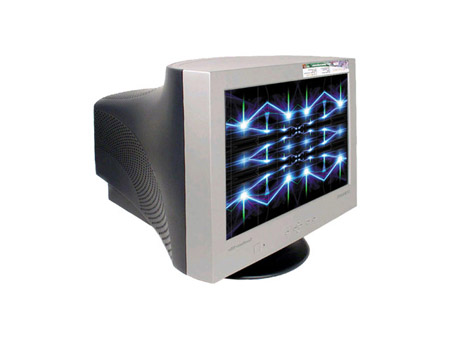
To this day, the 955DF is still one of the best bang-for-the-buck 19" monitors on the market. The .20mm dot pitch, max resolution of 1600x1200 @ 68Hz, and well known reliability, usability, low price and picture quality of this monitor are all reasons why we highly suggest taking a look at it. We've had extensive experience with this monitor, having done a review of it back in April 2002. To this day, we are still impressed with this monitor and can still confidently recommend it. As you may have guessed by now, CRT technology (especially in the bang-for-your-buck price range) hasn't moved much in quite some time, but that is the norm in this industry. So, don't be surprised if we continue to recommend this monitor for mid-range Buyer's Guides for some time.
Alternative: NEC Diamondtron 19" CRT (model FE991SB)
Price: $258 shipped
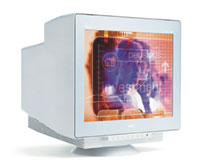
While costing significantly more money than a 955DF, Diamondtron monitors have gained popularity as some of the best CRTs on the market. This specific model has a 1792x1344 @ 68Hz, which is slightly better than the 955DF. Overall, having closely judged both monitors, we'd have to say the Diamondtron's picture clarity/sharpness is better than the 955DF. Gaming performance isn't much different at resolutions like 1600x1200, so there's no discernable difference there. However, if you want one of best of the 19" monitors out there, you certainly can't go wrong with this Diamondtron model.
Computer Case
Recommendation: CaseEdge TS1 Mid-TowerPrice: $40 shipped
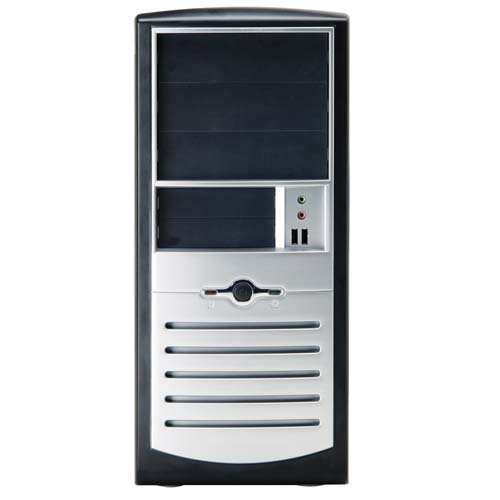
While we recommended this case last week, we can't help but recommend it again because of just how good it is for the price. You can purchase this case online at www.pcclub.com or go to a local PC Club to pick it up. Not only is the black and silver edition of this case very good looking, but the setup is very easy to use and convenient in general. For one, the motherboard mounting screws come installed in their proper holes, a welcome change from having to screw them in by hand. Secondly, the hard drive and optical drive bays contain plastic clips that allow you to install your drives simply and easily without screws. All in all, this case basically comes completely "preinstalled", and even includes a 300W PSU (power supply unit). However, unlike last week's system, this week's system requires a higher quality PSU and slightly higher wattage. We suggest an Enlight 360W power supply (model # 8361934A1), which can be found for $30 shipped online or at a local PC outlet. This will supply the necessary amount of power and stable voltages for your system.
Alternative: Kingwin K11 Aluminum ATX case
Price: $70 shipped
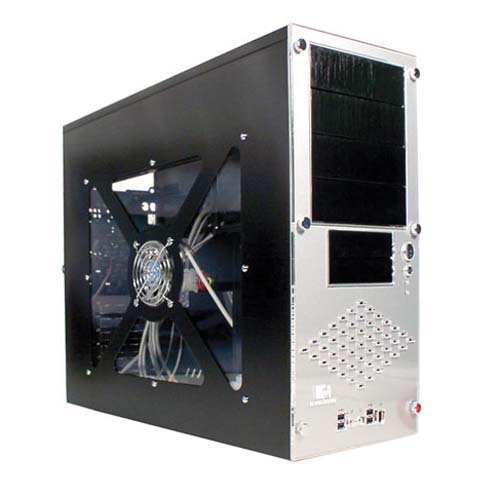
Kingwin makes a great aluminum computer case, dubbed their K11 series. Even with all your components installed, the case is still relatively light, even light enough to carry to a LAN party or bring it over to your friend's or family's house. It comes with four 5.25" bays, two external 3.5" bays and five internal 3.5" bays, four USB 2.0 ports, and one Audio, Mic, FireWire port. There are two front fans, one rear fan, and one top fan included as well. As we just suggested, a 360W Enlight power supply is recommended for a system that draws as much power as this one.
If you cannot find the lowest prices on the products that we've recommended on this page, it's because we don't list some of them in our RealTime pricing engine. Until we do, we suggest that you do an independent search online at the various vendors' web sites. Just pick and choose where you want to buy your products by looking for a vendor located under the "Vendor" heading.
Sound Card
Recommendation: Onboard soundPrice: $0
For a mid-range system, you most likely aren't going to need a lot of audio processing power unless you're an audiophile. If you are an audiophile, then you probably already have a pretty good idea of what kind of programs you run that would require the power of, say, an Audigy 2 sound card and a Gigaworks surround sound speaker system. But if you're just looking for basic sound that is of good quality (most onboard sound solutions sound identical) that will play music, games, etc., then the onboard sound on either your ABIT AN7/NF7-S Rev.2 motherboard or your ASUS P4P800 Deluxe motherboard will more than suffice. If you're looking for something more potent, we suggest that you peruse our High End Buyer's Guide from a few weeks ago.
One other comment we'd like to make about your sound is that if you choose ABIT's AN7/NF7-S Rev.2, you should realize that this motherboard has an MCP-T South Bridge, meaning you can bypass its onboard DAC by using the optical out port on the I/O panel of your board. This gives you much better sound quality basically for free (for gaming mostly). However, this requires speakers with the appropriate receiver, which costs more. If the better gaming sound quality is worth it to you, then we suggest going this route.
Speakers
Recommendation: Creative Labs SBS270 2.0 SpeakersPrice: $20 shipped
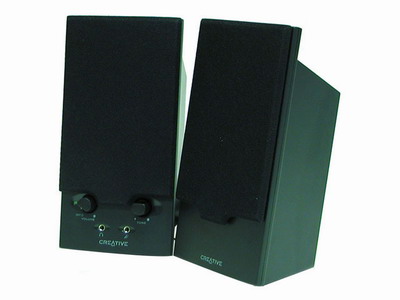
Speakers are a basic requirement for any computer system, but they aren't that important overall if you're building an entry level or mid-range system. For these users' purposes, Creative Labs makes a great pair of 2.0 speakers, dubbed the SBS270. These are excellent entry level/mid-range speakers for users who also want to have decent sound quality at least for video games and music listening. It also comes with a headphone input. There's no subwoofer or anything like that, but that's totally unnecessary unless you're keenly interested in a more powerful, surround sound listening experience.
Alternative: Logitech Z640 5.1 speakers
Price: $63 shipped
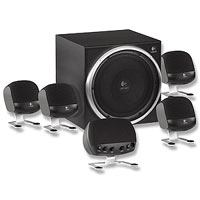
While totally unnecessary if you're not a gamer or audiophile, the Z640s are nonetheless a very popular and low cost set of high quality speakers. Whether you talk about the 45.5W satellite output/25.7W subwoofer output or the very effective magnetic shielding that protects your speakers from interference from other devices, you can't help but love these speakers. They have a great reputation for reliability and longevity in general, and our extensive personal use of these speakers only backs up that claim. If you want surround sound on the cheap, it's hard to beat the Z640. If you're a big gamer, we suggest the Audigy 2, if you can afford to spend the money. Personally, we find the immersive gaming experience of the Z640s and an Audigy 2 to be truly great, but others may not be so impressed and will opt for the cheaper variant.
If you cannot find the lowest prices on the products that we've recommended on this page, it's because we don't list some of them in our RealTime pricing engine. Until we do, we suggest that you do an independent search online at the various vendors' web sites. Just pick and choose where you want to buy your products by looking for a vendor located under the "Vendor" heading.
Networking
Nothing more than onboard networking is needed for a mid-range system like the one we're building today. However, a nice additional feature that the P4P800 Deluxe brings in terms of networking is its onboard 3COM Gigabit controller, capable of 10/100/1000 transfer speeds. This isn't going to change your experience on the Internet, but Gigabit is very useful for transferring large amounts of data to and from multiple networked computers in, for example, an office or within a family computers. Some will find the addition of Gigabit very useful for this purpose, while most will just stick to utilizing just the 10/100 capability.Storage
Recommendation: Western Digital 800JB (80GB) 7200RPM (8MB cache)Price: $70 shipped
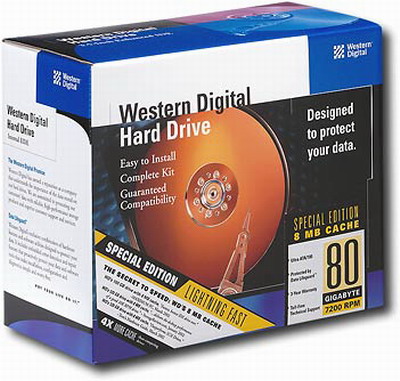
Western Digital's Caviar series of drives are still the best price/performance drives on the market, and literally the best in terms of price and performance. The "JB" in 800JB indicates that your WD drive has an 8MB buffer, which means that your drive is able to store more frequently accessed data than a 2MB drive, vastly increasing performance. Thankfully, if you buy from the right manufacturer, you will receive a 3-year warranty with your drive, which is very useful if you're the unfortunate victim of hard drive death (usually identifiable by the "click of death" sound).
Alternative: Western Digital 1200JB 120GB 7200RPM (8MB cache) ATA
Price: $92 shipped

For an extra $22, you can upgrade your WD 800JB drive to 120GB, which, as you've probably guessed by now, offers an additional 40GB or so in storage capacity. This type of additional capacity can be exceedingly useful if you're someone who stores endless emails in Outlook, plays lots of games, listens to lots of MP3's, or simply needs additional space for the next 12 or more months down the road. Overall, the 800JB and 1200JB aren't any different in anything that you need to concern yourself about, as they both come with the same 8MB buffer and both perform almost identically. Be wary of WD drives that emit the infamous "WD whine" that continues to annoy users to this day. Depending on your vendor, you may be able to return your drive for a quieter version.
Optical Storage
Recommendation: Sony 52x32x52 CD-RWPrice: $32 shipped

There aren't too many differences between CD-RW's nowadays, save for reliability among various manufacturers. For the most part, Sony has done a good job with their high-end CD-RW drives and we have had great success with them in the past, which is why we decided to recommend them today. You can burn music CD's in mere minutes, and even a full 700MB or 800MB with the appropriate media can be burned in a matter of 15-20 minutes depending on exactly what type of files you're burning. At $32 shipped, you really can't go wrong with this solution. We recommended this same optical drive in our Entry Level Guide last week, but it is equally useable for Mid-Range systems.
Alternative: Lite-On 52x32x52x16 Combo CD-RW/DVD-ROM drive
Price: $52 shipped
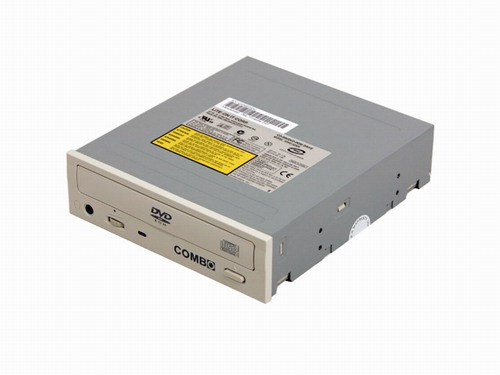
If you want to be able to watch DVDs, you can always opt for a combo drive. Its function essentially integrates CD burning and DVD watching into one drive. The added benefit is that you're getting a better price for this combo drive versus purchasing an additional drive. The price difference isn't all that huge ($10-$15) if you were to buy a separate drive, plus that second drive allows you to watch DVDs while your burn CDs, which isn't possible with this combo drive. In the end, the decision is up to you as to how you want to configure optical storage.
Keyboard and Mouse
While trivial, it's still important that you purchase the right keyboard and mouse. Different people have different preferences for a keyboard's feel and look, and the same goes for a mouse. Therefore, we suggest that you personally try out a keyboard and mouse for yourself. Recommending purchasing these items online is misleading, as there are too many users with different preferences for this type of thing. Visit your nearest PC outlet to try out a keyboard and mouse yourself; a PC Club, Best Buy, CompUSA, or Circuit City store will do. We suggest that you start with Microsoft and Logitech keyboards and mice. Make sure you also check out optical mice from Microsoft and Logitech as well. A good solid optical mouse from either manufacturer should run about $20, but in some cases, can run as little as $10 if you can find the right deal.Mid-Range System Summary
| Hardware | Component | Price |
| CPU & Cooling | AMD Athlon XP 2800+ | $120 |
| Motherboard | ABIT AN7 (nForce2 Ultra 400) | $102 |
| Memory | 2 X 256MB Mushkin Basic Green PC3200 (DDR400) | $90 |
| Video Card | 128MB PowerColor Radeon 9600 Pro | $129 |
| Monitor | Samsung 955DF DynaFlat CRT | $200 |
| Computer Case | CaseEdge TS1 (plus $30 360W PSU) | $70 |
| Sound Card | Onboard | $0 |
| Speakers | Creative Labs SBS270 | $20 |
| Networking | Onboard | $0 |
| Hard Drive | Western Digital 800JB (80GB) | $70 |
| CD-RW | Sony 52x32x52 CD-RW | $32 |
| Bottom Line | - | $833 |
$833 is the final price of our mid-range system this week, not including any money that you'll spend on software (Windows XP Home or Professional, Office, etc.) or a keyboard and mouse.
It's great to see how little you can spend on a system these days while still being able to wring great performance from it. For $833, you'd be hard pressed to find a faster system.
Now go build your system and let us know what you think in our comments section.







